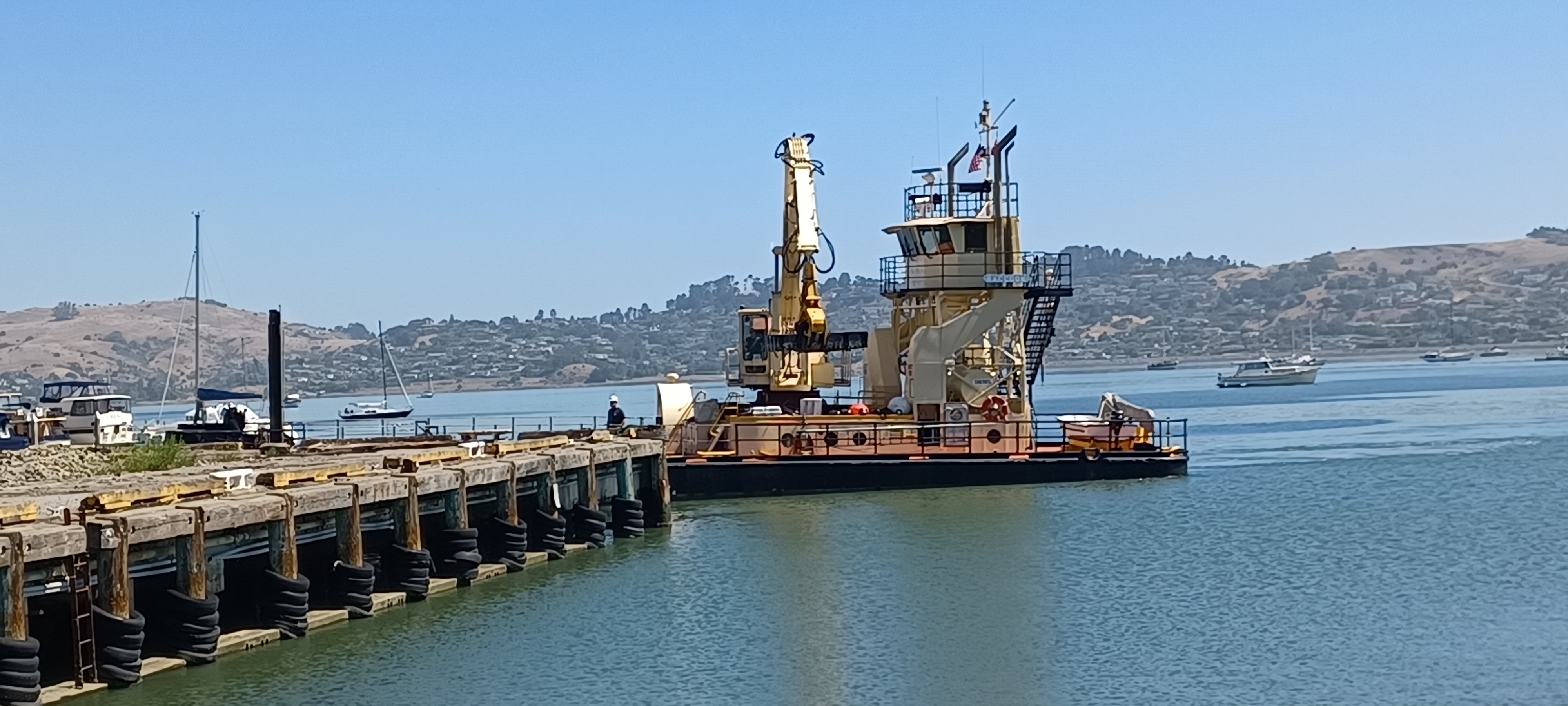
An Early Challenge
Floating hazards from rotting piers, sunken vessels and storm-tossed debris have always made navigation on San Francisco Bay difficult and caused many accidents.
Despite the danger to shipping, it was a seaplane crash into the bay that ultimately led to the authorization of a hazard removal program.
In June 1942, Admiral Chester Nimitz, recently appointed Commander in Chief, Pacific Fleet, was on his way from Hawaii to Washington D.C. via San Francisco. While landing in San Francisco Bay, his seaplane struck floating debris. The bottom of the aircraft was ripped open and it capsized. Admiral Nimitz was able to scramble to safety without serious injury, but the pilot was killed.
Shortly after that incident, the Chief of Engineers directed the Corps’ San Francisco District to begin a hazard collection program in San Francisco Bay, a mission which continues to this day.
Early efforts were cumbersome, but effective. During World War II, small tugs with crews of both civilian and Navy enlisted men patrolled bay waters daily collecting floating hazards and towing them to a disposal site at the Alameda Naval Air Station.
Safe Passage for Everyone
Today, the San Francisco District’s floating debris hazard collection boats, "Raccoon", and "Dillard" work out of the District’s Sausalito Base Yard facility. They range far and wide patrolling for debris in bay waters, removing about 90 tons a month. The Raccoon is a World War II vintage, converted aircraft recovery vessel, and it has been modified to meet its hazard collection mission.